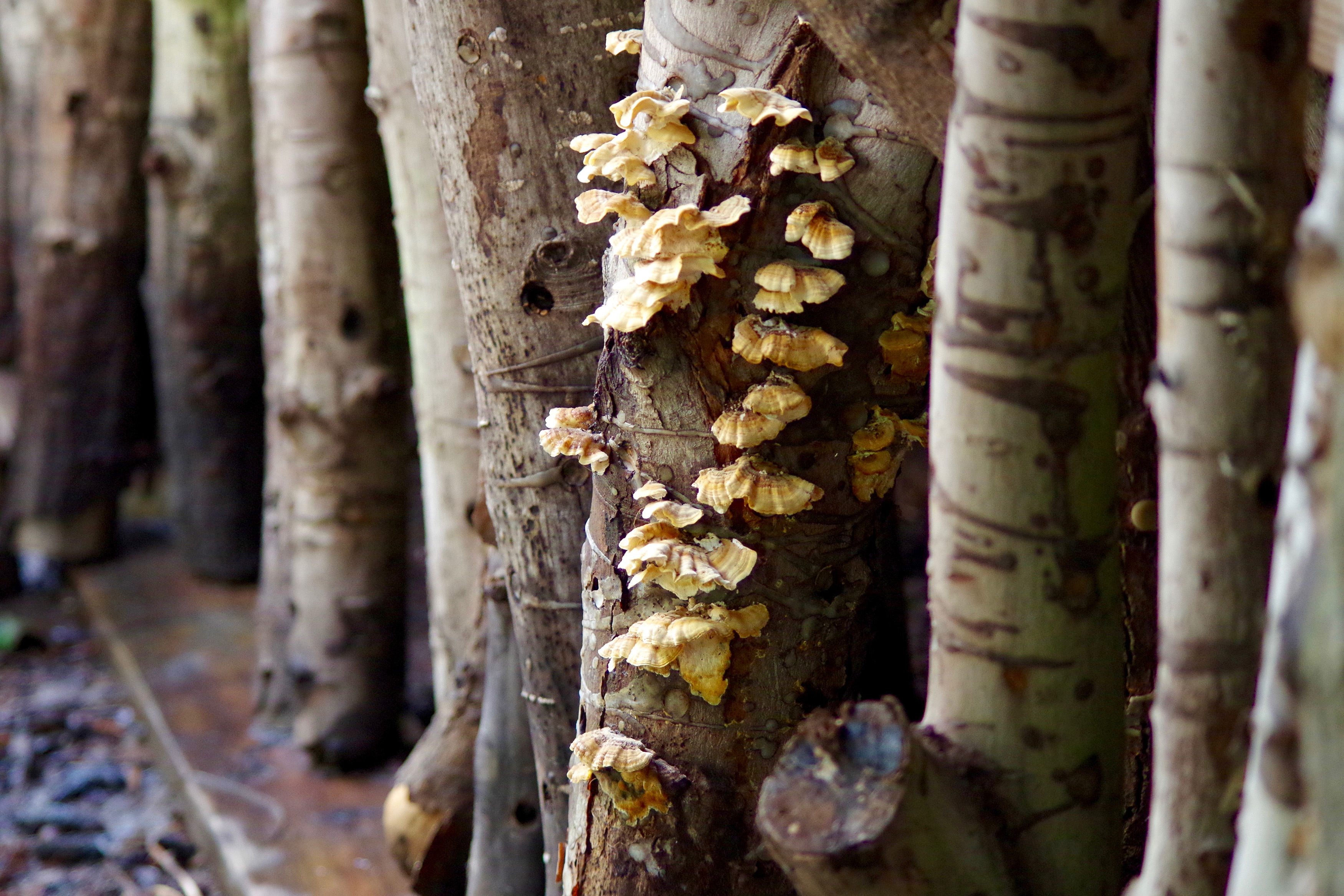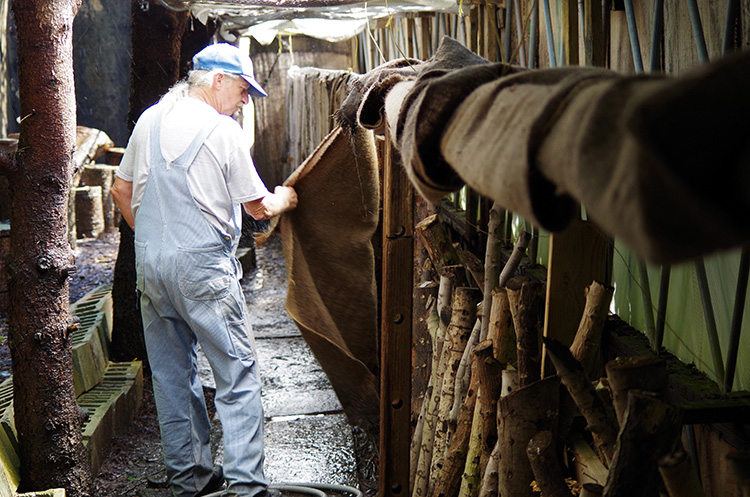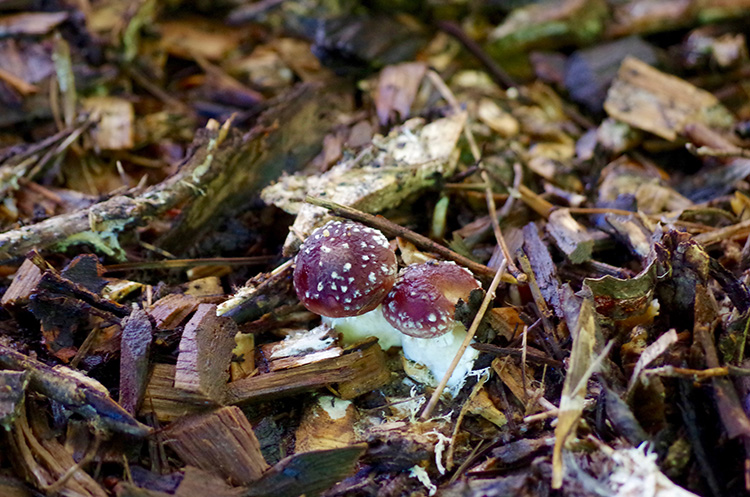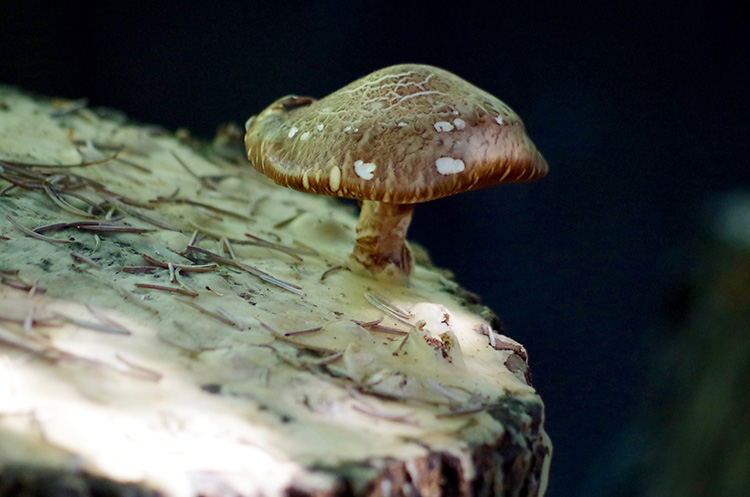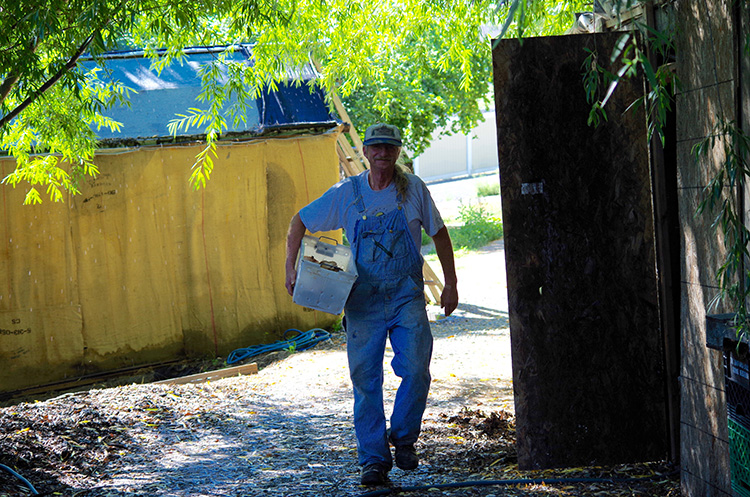Hope still lingers around Michael Bennett. Hope the dog, I mean. The last time rooted visited the local mushroom farmer, it was winter, and Michael and Hope welcomed us into their shop and the indoor growing chamber used to grow oyster mushrooms. We were amazed. Between the columns of pasteurized straw pinning out with Polar Whites and Grey Doves, we gained a thorough understanding of how mushrooms grow, and were totally impressed with Michael’s knowledge and tenacity. We knew we had to come back in the summertime, when all of his outdoor chambers were up and running, so this week we checked in with him to get a feel for his warm weather operation.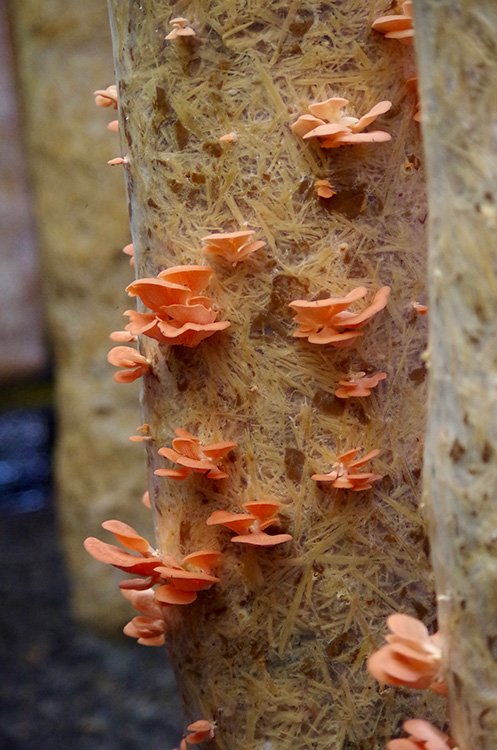
Being in and out of town this summer, when coming home to the Yakima Valley, one word comes to mind. Parched. All dust and yellow, these dog days are thirsty looking. Of course, there are the irrigated greens, but the standing dry heat that is usual for this time of year is living up to its desert stereotype. Mushrooms are moist lovers. I recall Michael telling us that he was told he’d have to be stubborn and attentive to grow fungus here, and right now, it’s very clear why. I was curious to see what sort of setup he would have to cool things down and keep the humidity up, in addition to the variety of things he has growing.
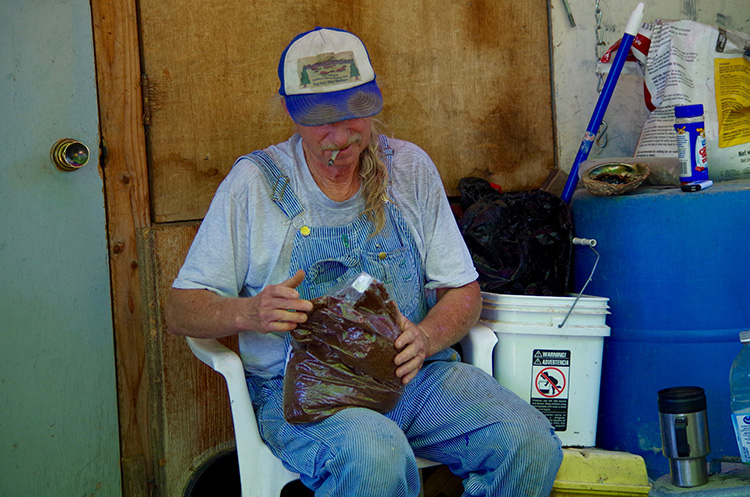
I arrive late in the afternoon and Michael is sitting outside the shop churning a bag of spawn up with his hands and smoking a hand rolled cigarette. I inspect the big blue barrels of straw pasteurizing out front as I walk up, and Hope runs over and sniffs hello. Michael is heading out for a harvest and I’m tagging along. 
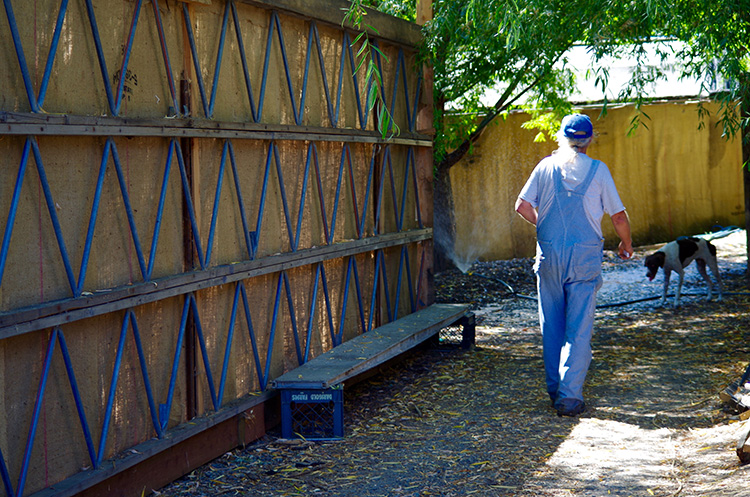
 We follow a path over to a wooden structure covered in burlap. An overhead sprinkler is circling on the roof. We duck inside and it’s instantly cooler and very wet. Michael explains that under the roof is a plastic ceiling with another sprinkler. The overhead on the roof cools things down, and the sprinkler over the ceiling drips down to the sides and gets the burlap walls wet, which warms up in the sun and creates humidity in the chamber because of its breathability. Several straw columns of Pink Oyster mushrooms are growing here. There is something really beautiful about it. In a moment of silence, the water above the plastic ceiling sounds like a soft rain in the cool space.
We follow a path over to a wooden structure covered in burlap. An overhead sprinkler is circling on the roof. We duck inside and it’s instantly cooler and very wet. Michael explains that under the roof is a plastic ceiling with another sprinkler. The overhead on the roof cools things down, and the sprinkler over the ceiling drips down to the sides and gets the burlap walls wet, which warms up in the sun and creates humidity in the chamber because of its breathability. Several straw columns of Pink Oyster mushrooms are growing here. There is something really beautiful about it. In a moment of silence, the water above the plastic ceiling sounds like a soft rain in the cool space. 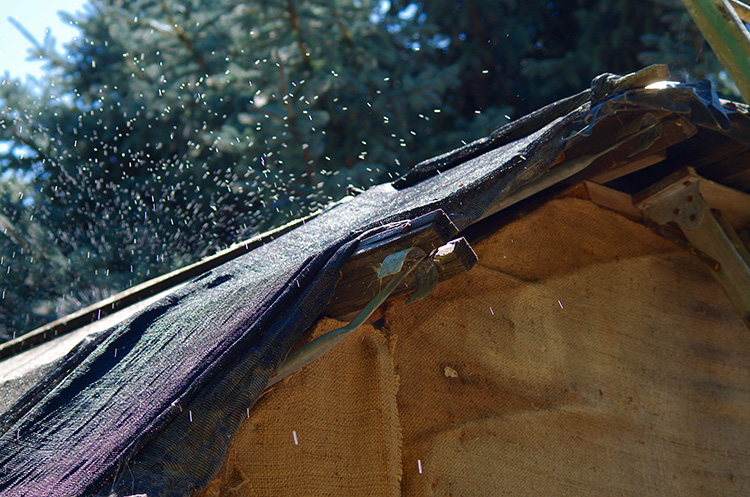
The next area is filled with wood. Tree stumps along the left side, large branches leaning vertically on the right under a burlap cover. There is a row of evergreen trees running down the middle which is being used to create the structure which gives the space a lovely woodland effect. I half expected to see a fairy pop out and grab a mushroom cap as an umbrella. All the wood has many different bore holes where mycelium spawn has been injected, effectively inoculating it. Over time, depending on the kind of mushroom, the mycelium grows through the wood and mushrooms start pinning out of the weak points. He has some Silver Maple stumps that were inoculated with Shiitake spawn last year and are just pinning now. Other varieties can pin in a matter of weeks. The other end of the chamber is all Poplar, which Michael says is best for Oyster Mushrooms. I watch as he bends over to gently cut the large mushrooms and place them in his basket.
The next chamber has stumps and wood shaving bricks that Michael made himself with planer shavings and wheat bran. This room was built into a slope, and a misting system lines the perimeter, wetting the burlap. Michael mentions that every room has a different spirit about it, and I get that as we explore. Each room is different, even when they are growing the same kinds of mushrooms. Its unlike anything I’ve ever seen.
Michael isn’t a big-budget farmer. He’s a make-it-work-with-what-you’ve-got farmer. Every chamber comes together in its own way. Mushrooms grow or not. He says that every day is an Easter Egg hunt. Because of the challenging dry climate here, he says that all he can do is try to manipulate some of the variables and see what happens. He kept saying, “It’s not good or bad, it just is.” For someone who gets bored easily when things become too routine, it’s the perfect profession. Lucky for us, we get to benefit from his constant learning.

